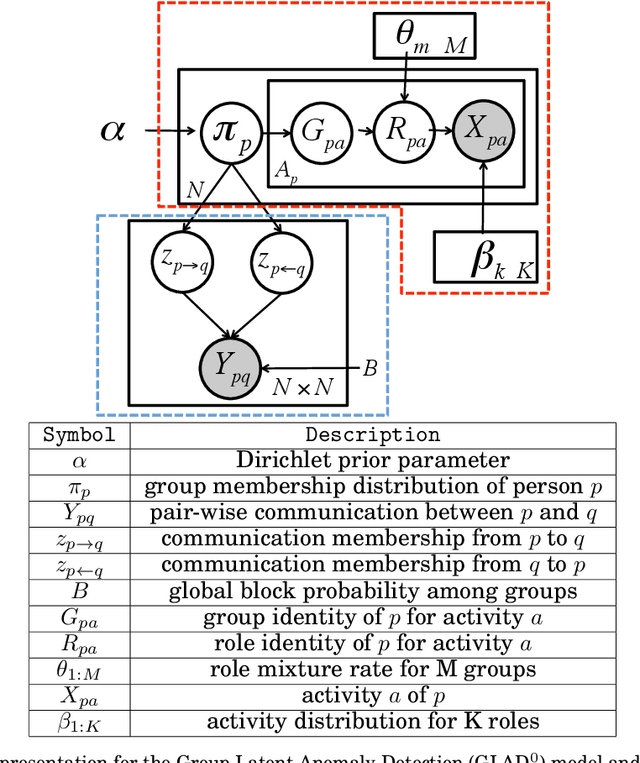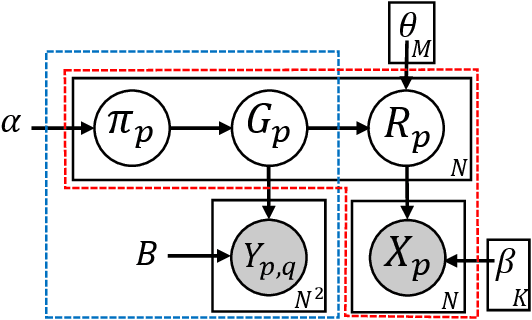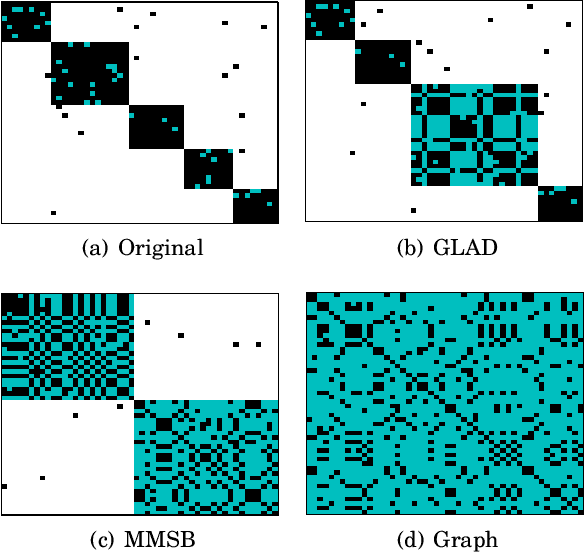GLAD: Group Anomaly Detection in Social Media Analysis- Extended Abstract
Paper and Code
Oct 07, 2014



Traditional anomaly detection on social media mostly focuses on individual point anomalies while anomalous phenomena usually occur in groups. Therefore it is valuable to study the collective behavior of individuals and detect group anomalies. Existing group anomaly detection approaches rely on the assumption that the groups are known, which can hardly be true in real world social media applications. In this paper, we take a generative approach by proposing a hierarchical Bayes model: Group Latent Anomaly Detection (GLAD) model. GLAD takes both pair-wise and point-wise data as input, automatically infers the groups and detects group anomalies simultaneously. To account for the dynamic properties of the social media data, we further generalize GLAD to its dynamic extension d-GLAD. We conduct extensive experiments to evaluate our models on both synthetic and real world datasets. The empirical results demonstrate that our approach is effective and robust in discovering latent groups and detecting group anomalies.
 Add to Chrome
Add to Chrome Add to Firefox
Add to Firefox Add to Edge
Add to Edge